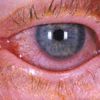- Clinical Technology
- Adult Immunization
- Hepatology
- Pediatric Immunization
- Screening
- Psychiatry
- Allergy
- Women's Health
- Cardiology
- Pediatrics
- Dermatology
- Endocrinology
- Pain Management
- Gastroenterology
- Infectious Disease
- Obesity Medicine
- Rheumatology
- Nephrology
- Neurology
- Pulmonology
Contaminated Ocular Products:
In recent months, the widely publicized outbreak of Fusarium keratitis has called attention to the serious consequences of contamination of ocular solutions. Although contact lens solution was implicated in the recent outbreak, other ocular products can also pose the risk of infection
In recent months, the widely publicized outbreak of Fusarium keratitis has called attention to the serious consequences of contamination of ocular solutions. Although contact lens solution was implicated in the recent outbreak, other ocular products can also pose the risk of infection (Box).
AN OVERVIEW OF THE OUTBREAK
As of May 2006, the Centers for Disease Control and Prevention had received reports of 130 confirmed cases of Fusarium keratitis from 26 states and 1 territory.1,2 Seventy-five reports included insufficient evidence to classify them as cases or carried other non-Fusarium diagnoses. Patients with Fusarium-induced keratitis had a median age of 41 years (12 to 83 years), and 67% were female.
ASSOCIATION WITH CONTACT LENS SOLUTION
The exact cause of the recent outbreak of Fusarium keratitis is not yet known. However, the majority of confirmed cases involved contact lens wearers who used Bausch & Lomb ReNu with MoistureLoc Multi-Purpose Solution to clean their lenses.1,2 In 31% of cases, corneal transplantation was required as a result of the infection.
Product recall. By mid-April 2006, Bausch & Lomb, Inc. had removed the ReNu with MoistureLoc cleaning and disinfecting solution from store shelves. The company also issued an advisory that consumers should immediately stop using this product.
ReNu with MoistureLoc is a reformulated solution. The original preservative agent, polyhexamethylene biguanide (PHMB), was replaced with another biguanide, alexidine, a smaller molecule than PHMB. Alexidine is widely used in oral mouthwashes to reduce plaque. This change in preservative was done to decrease the time required to kill microorganisms from 6 hours to 4 hours.3
Possible contributing factors. Since this outbreak, Bausch & Lomb has investigated potential factors that may have caused the infections. The company was able to exclude contamination, product tampering, counterfeiting, and sterility failure.4
Bausch & Lomb found, however, that the surfactants contained in the MoistureLoc formulation may, under certain conditions, form a thin polymer film on bottle tips, bottle caps, and contact lens storage cases.5 These conditions include:
- "Topping off" the lens care solution in the wells of the storage case instead of replacing the solution.
- Minimal or no cleaning of the contact lens case itself.
The polymer film protects or shields theFusarium organism from phagocytosis by leukocytes, even in the presence of preservative.
Another contributing factor is the high prevalence of the Fusarium organism in bathroom sinks and drains.4,5 Finally, some patients may be especially susceptible to Fusarium infection.5 Among the conditions that heighten susceptibility are:
- Chronic surface disease (eg, dry eye, blepharitis, and meibomitis).
- Immunocompromised status, such as from HIV infection or systemic corticosteroid use.
- Trauma.
- Contact lens wear during water activities.

DIAGNOSIS OF
FUSARIUM
KERATITIS
Fusarium is a filamentous fungus; it forms corneal infiltrates that have an elevated, dirty gray appearance with feathery or filamentous margins.6 Satellite infiltrates or small immune rings may also be seen. Endothelial plaques and hypopyon may be present.6,7 Patients at greatest risk for fungal keratitis are those who live in warmer and more humid environments, do not follow instructions regarding contact lens wear and care, and/or are in settings in which vegetative matter may be a potential contaminant.8
In evaluating any type of keratitis, examination with a slit lamp is required. Definitive diagnosis of fungal keratitis is made by evaluation of culture of scrapings or material obtained from corneal biopsy (Figure).7 Refer all suspected cases of keratitis to an ophthalmologist, preferably a corneal specialist.
TREATMENT OF
FUSARIUM
KERATITIS
Regimens for the treatment of infection with filamentous fungi, and Fusarium in particular, include natamycin 5% suspension plus amphotericin B 0.15% or an azole such as fluconazole 0.2%, itraconazole 1%, or voriconazole 1%.7 With the exception of natamycin 5%, which is available as an ocular suspension, these medications must be prepared by a compounding pharmacy. Oral itraconazole or voriconazole may be added in patients who exhibit evidence of deeper stromal involvement or infiltrates approaching the limbus, or who have infections that fail to respond to topical therapy alone.7 The use of topical corticosteroids is contraindicated, since they may cause the infection to proliferate.7,9
For patients who have more recalcitrant infections or whose vision has been severely compromised, additional treatment options include corneal lamellar dissection and debridement, amniotic membrane transplant, and penetrating keratoplasty.6,8
References:
REFERENCES:
1.
Centers for Disease Control and Prevention.
Fusarium
keratitis--multiple states, 2006.
MMWR Dispatch.
2006. April 10;55(Dispatch):1-2. Available at:
www.cdc.gov/mmwr/preview/mmwrhtml/mm55d410a1.htm
. Accessed September 15, 2006.
2.
Centers for Disease Control and Prevention. Update:
Fusarium
keratitis--United States, 2005-2006.
MMWR.
2006 May 26;55:563-564. Available at:
www.cdc.gov/mmwr/preview/mmwrhtml/mm5520a5.htm
. Accessed September 15, 2006.
3.
Webb JA.
Fusarium
frustration.
Ophthalmol Times.
2006;31(11):1, 8, 12, 15.
4.
Cruz D. Contact lens solution permanently removed from markets worldwide.
Prim Care Optom News.
2006;11(6):11-12.
5.
Webb JA. Right mix of conditions may be link to
Fusarium.
Ophthalmol Times.
2006;31(12):1, 11, 14.
6.
Zloty P. Diagnosis and management of fungal keratitis.
Focal Points: Clinical Modules for Ophthalmologists.
2002;20(6):1-13.
7.
Glasser DB.
Fusarium
keratitis in contact lens wearers.
Cornea Society News.
2006;3(2):1, 3.
8.
Semes L. Use
Fusarium
cases to emphasize proper lens care.
Contact Lens Spectrum.
2006;21(6):67.
9.
Murphy J.
Fusarium
outbreak continues to mystify.
Rev Optom.
2006; 143(5):4-6.
10.
Rahman MQ, Tejwani D, Wilson JA, et al. Microbial contamination of preservative free eye drops in multiple application containers.
Br J Ophthalmol.
2006;90:139-141.
FOR MORE INFORMATION:
- Onofrey BE, Skorin L Jr, Holdeman NR. Ocular Therapeutics Handbook: A Clinical Manual. Philadelphia: Lippincott Williams & Wilkins; 2005.
